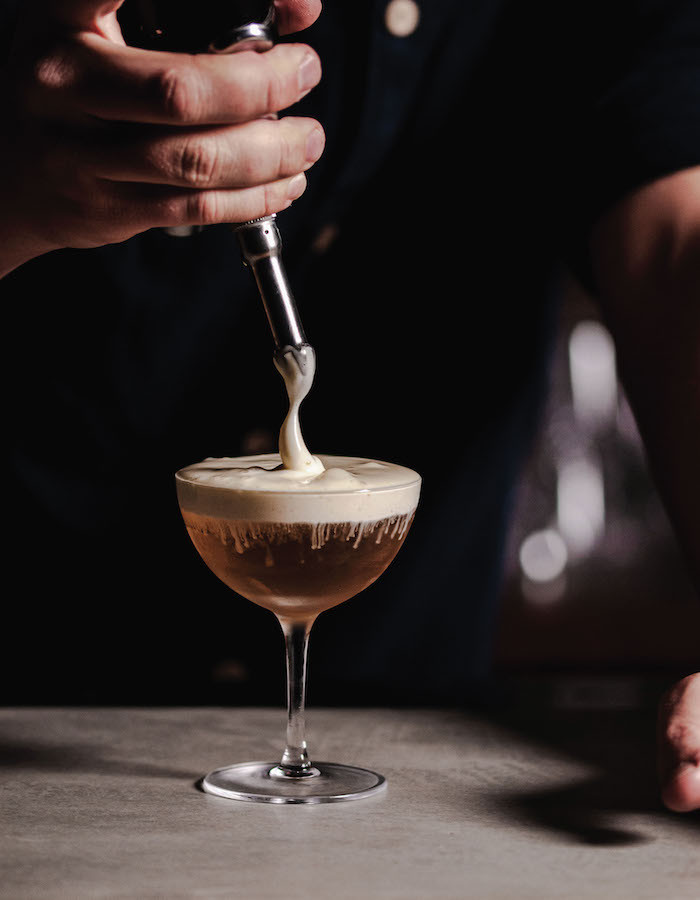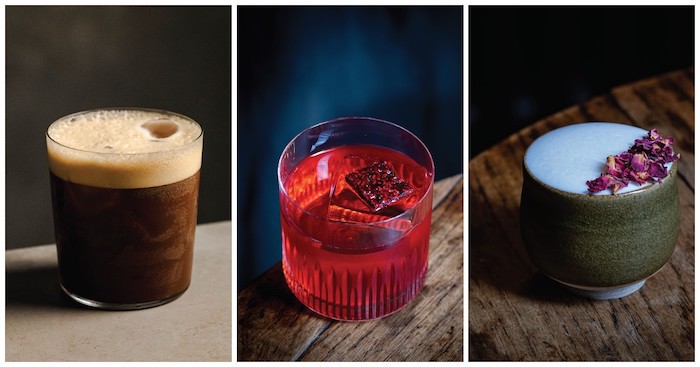
Tyler Zielinski looks at some alternatives to traditional cold-weather drinks.
Until the arrival of the “American bar” in Britain in the late 19th century, which helped popularise cold drinks in the UK, Britons mostly imbibed cocktails that were either served at room temperature or hot. Wassail bowls, decadent Tom & Jerries, warming spice-filled punches, tiny toddies and other drinks that we now consider “winter warmers” weren’t only preserved for chillier months and seasons — they were some of the most fashionable, omni-seasonal cocktails of their era.
As a result of their early prominence in cocktail culture, these time-tested serves, distinguished by their decadence, warmth, and dessert-like characteristics, have long-defined seasonal winter drinking. But, in the era of high-concept, hyper-seasonal cocktails, innovative bartenders are challenging their guests to rethink winter seasonality by diversifying the flavour profiles and sensations of the season’s cocktails. They’re doing this by taking a more methodical, long-term approach to menu development, integrating a range of preservation techniques – from fermentation and curing, to distillation and dehydration – into their beverage programmes, which allow bars to present the bounties of spring and summer in novel ways, lending a much-desired freshness to winter’s cocktails.
This approach is visually on display in the dimly lit concrete cellar where Kol Mezcaleria operates. At any time of year, a hodgepodge of ageing infusions contained in massive glass jars can be found lining the back bar. For the 2023/2024 winter season, bar manager Matthias Ingelmann has created a few ingredients that he plans to feature on the bar’s hyper-seasonal cocktail list, including a nixtamalized pine cone-infused mezcal that he started in the spring/early summer, as well as a Mexican inspired take on the quintessential Italian nocino (green walnut liqueur), which is made by infusing mezcal with British green walnuts for five months before being filtered, sweetened and mixed.
In addition to longer-lead projects such as the aforementioned infusions, Ingelmann dehydrates spring and summer leaves and herbs, such as meadowsweet and woodruff, to use at a later date in his winter cocktails. “Currently we have a Woodruff & Coffee Hot & Cold on the menu, which is all about playing with temperatures,” says Ingelmann. “The drink, which consists of mezcal, cacao, coffee and fig leaf, is served straight from the freezer at -5°C before being topped up with a hot [white chocolate and woodruff] cream foam at 65°C.” It’s a sensational serve in the most literal sense of the word with its contrasting temperatures and comforting wintry flavours that appeal to the average imbiber, but the drink is composed with ingredients that set it apart from cocktails served at other bars.
At Heckfield Place in Hampshire, the hotel’s low waste-minded beverage programme adopts similar practices to Kol Mezcaleria, with the bar team working closely with the kitchen during the spring, summer and even early autumn to create batches of preserved components which feature in drinks throughout the winter. Jenna Kirkpatrick, head of bar production at Heckfield Place, says she’s used leftover roasted quince to make a zero-waste quince liqueur, in addition to pickling and dehydrating various foods that find their way into other seasonal serves. “One of our current Martinis is made with pickled cucamelon, meaning guests can enjoy the crunch of spring in their winter Martini,” says Kirkpatrick. “This means winter flavours by default no longer need to be heavy and decadent, but can be fresh and fruity.”

From left: Hapusa at Moon Bar; Rosehip Oine at Moon Bar; Carillo at Kol
Getting creative
This wintertime freshness also appears in other creative cocktails around the UK. At Spring Restaurant in London, the bar team create their own crème de mûre with blackberries from Fern Verrow farm that feature in a juicy Blackberry & Vanilla Bramble; Nipperkin clarifies, acidifies and sweetens summer’s celery and cucumber juices for its Margarita-style Celery & Cucumber cocktail (and the adjusted juices are frozen until they’re needed to ensure long term quality); Soda & Friends create a roasted apricot and cardamom syrup that’s used as a base for its Capri highball; and at Lucky 7 in Birmingham, the bar rotates seasonal preserves on the Old and New section of its menu, currently using a caramelised quince with quince flower wine, made from quince flowers harvested in April, that’s combined with burnt quince liqueur, vodka, bay leaf-infused vermouth blend and a quince vinegar from 2019 for an exceptional Martini-meetsGimlet-style cocktail.
While many bars with goals of wasting less and embracing the avant-garde have aspirations to adopt this approach to seasonal winter cocktails, execution is a matter of tedious planning, experimentation and, frankly, having enough storage space. “Start with dried ingredients as they’re cheap, easy to store and have a good shelf life,” says Ingelmann. “Do small trial runs and closely document what you’re doing to learn from it and be able to use that learning in following years. At Kol, we always do scaled-down tests for our infusions and document how they develop over time. If it goes well we will repeat them next year in larger volumes.”
Ingelmann’s philosophy is shared by Nate Brown, creative director of Socap Group, which includes Soda & Friends, with Brown advising bartenders not to go “too hard too quickly,” with new ingredient prep. “A few small jars of lacto-fermented produce can act as a sufficient flavour base for a syrup or cordial,” says Brown, “so don’t be fooled into thinking you need to do buckets of stuff to last a season.”
Realistically, based on the points Ingelmann and Brown made, going all-in on the reinvigorated winter cocktail isn’t feasible for every bar; but it is undeniably one of the best ways for bars to attract a wider range of drinker as these cocktail programmes tend to be just as flavourfully diverse and vibrant in winter as they are during the bountiful spring and summer seasons. As more bars balance honouring cocktail tradition with harnessing time and technique to champion this approach to seasonality, Brown offers one final piece of wisdom. “Don’t be afraid to fail,” he says. “It won’t always produce the flavours you’re after, but that’s OK. Keep playing, and keep on thinking ahead. It’s an important trait to foster in your team and only benefits the beverage programme.”


